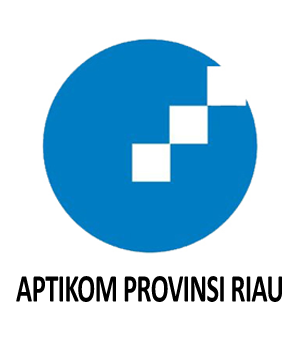OPTIMIZING BRAND AWARENESS BY USING FACEBOOK ADS AT BINA POTENSI ANAK INDONESIAN SCHOOLS
Abstract
The development of social media today makes changes to marketing methods. Marketing using social media is a cheap solution and does not pose a high risk for the users. With social media, it can be used a way to increase brand awareness. An effective digital marketing media is needed to increase brand awareness, one of them is Facebook ads. In the education sector, facebook ads are still rarely used, generally schools use conventional marketing methods, this method has weaknesses, such as: limited scope and inefficient marketing costs. Marketing used conventional methods is considered ineffective, it occur at out by BPAI School in 2019 only 10% of potential consumers contacted the school. The small number of marketing effectiveness is the influence of the low brand awareness of the BPAI School, therefore innovation is needed in marketing to increase brand awareness, it is by using facebook ads. The results of the implementation of facebook ads at BPAI School for 5 days concluded that facebook ads had significant effect in increasing brand awareness
Downloads
References
[2] S. Singh, Shiv dan Diamond, Social Media Marketing For Dummies, 3rd ed. Canada: John Wiley & Sons, Inc., 2015.
[3] R. Johns and B. Perrott, “The impact of internet banking on business-customer relationships (are you being self-served?),” Int. J. Bank Mark., vol. 26, no. 7, pp. 465–482, 2008, doi: 10.1108/02652320810913846.
[4] M. Dehghani and M. Tumer, “A research on effectiveness of Facebook advertising on enhancing purchase intention of consumers,” Comput. Human Behav., vol. 49, pp. 597–600, 2015, doi: 10.1016/j.chb.2015.03.051.
[5] B. Sijabat, “Analisis Keputusan Membeli Berbasis Brand Awareness sebagai Impak Google Ads dan Facebook Ads (Kajian Pelanggan Lazada),” Syntax Idea, vol. 3, no. 3, p. 444, 2021, doi: 10.36418/syntax-idea.v3i3.1060.
[6] D. G. Taylor, J. E. Lewin, and D. Strutton, “Friends, fans, and followers: Do ads work on social networks? How gender and age shape receptivity,” J. Advert. Res., vol. 51, no. 1, pp. 258–275, 2011, doi: 10.2501/JAR-51-1-258-275.
[7] S. Barokah, O. A. D. Wulandari, M. T. Sari, and I. F. Yuditama, “Optimalisasi Digital Marketing melalui Facebook Ads di Kelurahan Purwanegara,” J. Abdimas BSI J. Pengabdi. Kpd. Masy., vol. 4, no. 1, pp. 17–22, 2021, doi: 10.31294/jabdimas.v4i1.7085.
[8] B. J. Jansen, K. Moore, and S. Carman, “Evaluating the performance of demographic targeting using gender in sponsored search,” Inf. Process. Manag., vol. 49, no. 1, pp. 286–302, 2013, doi: 10.1016/j.ipm.2012.06.001.
[9] Redcomm, “Mengukur brand awareness campaign gampang kok,” 2021. https://redcomm.co.id/knowledges/mengukur-brand-awareness-campaign-gampang-kok.
[10] B. Susilo, “Pemasaran Digital: Segmentasi Demografi Pengguna Media Sosial di Kota Pontianak,” Eksplora Inform., vol. 8, no. 1, p. 69, 2018, doi: 10.30864/eksplora.v8i1.163.
[11] Facebook, “How much Facebook ads cost,” 2021. https://www.facebook.com/business/ads/pricing (accessed Apr. 30, 2021).
[12] Tikno, “Measuring performance of facebook advertising based on media used: A case study on online shops in Indonesia,” Procedia Comput. Sci., vol. 111, pp. 105–112, 2017, doi: 10.1016/j.procs.2017.06.016.
[13] Facebook, “Reach,” 2021. https://www.facebook.com/business/help/710746785663278 (accessed Apr. 25, 2021).
[14] N. Hidayah, L. E. Putri, and S. W. D. Kusuma, “Instagram Marketing Engagement di Wana Wisata Ranca Upas Kabupaten Bandung,” Khasanah Ilmu-Jurnal Pariwisata dan Budaya, vol. 11, no. 2, pp. 92–100, 2020, doi: 10.31294/khi.v11i2.7623.
[15] A. S. Danielle Elliott Smith, Social Media Engagement For Dummies, 1st ed. Canada: John Wiley & Sons, Inc, 2013.
[16] L. Agustina, “Viralitas konten di media sosial,” Maj. Semi Ilm. Pop. Komun. Massa, vol. 1, no. 2, pp. 149–160, 2020.
[17] A. Deza and D. Parikh, “Understanding image virality,” Proc. IEEE Comput. Soc. Conf. Comput. Vis. Pattern Recognit., vol. 07-12-June-2015, pp. 1818–1826, 2015, doi: 10.1109/CVPR.2015.7298791.
[18] Facebook, “Impressions,” 2021. https://www.facebook.com/business/help/675615482516035 (accessed Apr. 25, 2021).
[19] A. Finn, “The Real Effect of Running a Facebook Ad Campaign in 5 Charts,” 2017. https://www.wordstream.com/blog/ws/2017/03/28/facebook-ad-campaign-data (accessed Apr. 30, 2021).
[20] Facebook, “Post Engagement,” 2021. https://www.facebook.com/business/help/735720159834389 (accessed Apr. 25, 2021).
[21] Redcomm, “MENINGKATKAN ENGAGEMENT DI INSTAGRAM, INI CARA TERBAIK SESUAI ALGORITMA INSTAGRAM,” 2021. https://redcomm.co.id/knowledges/meningkatkan-engagement-di-instagram-ini-cara-terbaik-sesuai-algoritma-instagram (accessed Apr. 30, 2021).
[22] Facebook, “Link Clicks,” 2021. https://www.facebook.com/business/help/659185130844708 (accessed Apr. 25, 2021).
[23] P. P. Radovan Bačík, Richard Fedorko, Lukáš Kakalejčík, “The Importance of Facebook Ads in Terms of Online Promotion,” J. Appl. Econ. Sci., vol. X, no. 5, pp. 677–683, 2015, [Online]. Available: https://www.ceeol.com/search/article-detail?id=537100.
[24] H. Logan, K., Bright, L.F. and Gangadharbatla, “Facebook versus television: advertising value perceptions among females,” J. Res. Interact. Mark., vol. 6, no. 3, pp. 164–179, 2012, doi: https://doi.org/10.1108/17505931211274651.
[25] Simon Kemp, “DIGITAL 2020: GLOBAL DIGITAL OVERVIEW,” 2020. https://datareportal.com/reports/digital-2020-global-digital-overview (accessed Apr. 30, 2021).
This is an open-access article distributed under the terms of the Creative Commons Attribution-ShareAlike 4.0 International License which permits unrestricted use, distribution, and reproduction in any medium. Users are allowed to read, download, copy, distribute, search, or link to full-text articles in this journal without asking by giving appropriate credit, provide a link to the license, and indicate if changes were made. All of the remix, transform, or build upon the material must distribute the contributions under the same license as the original.















